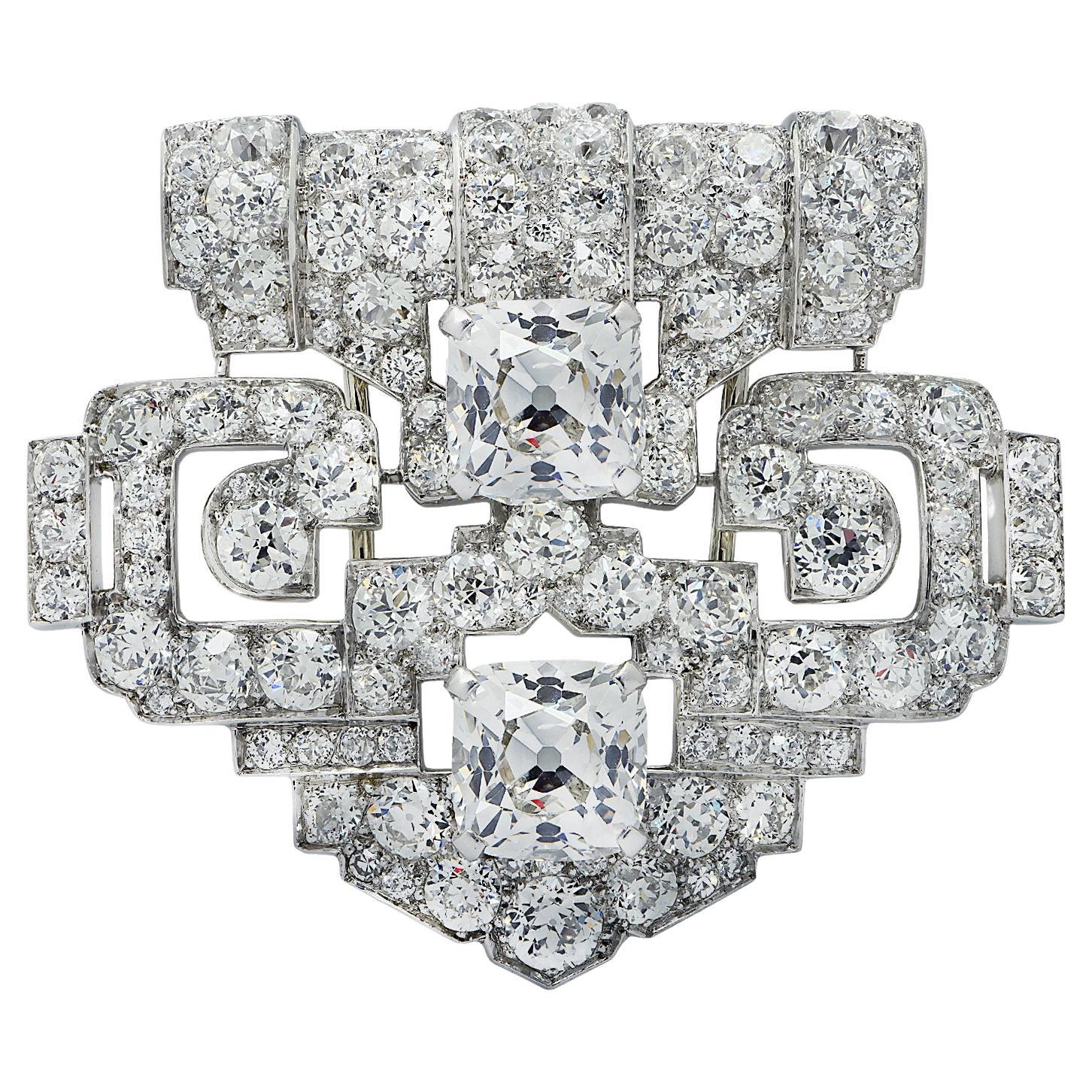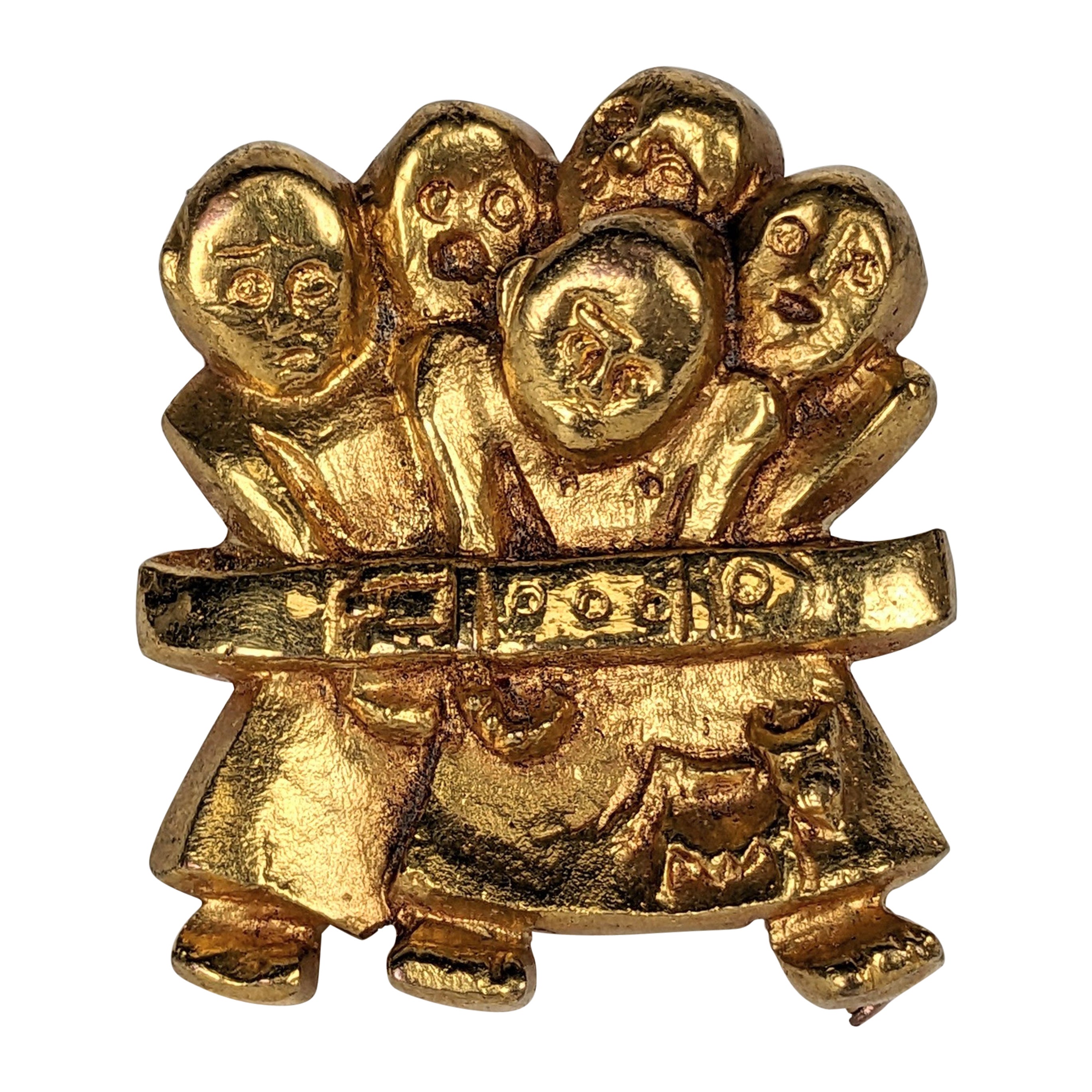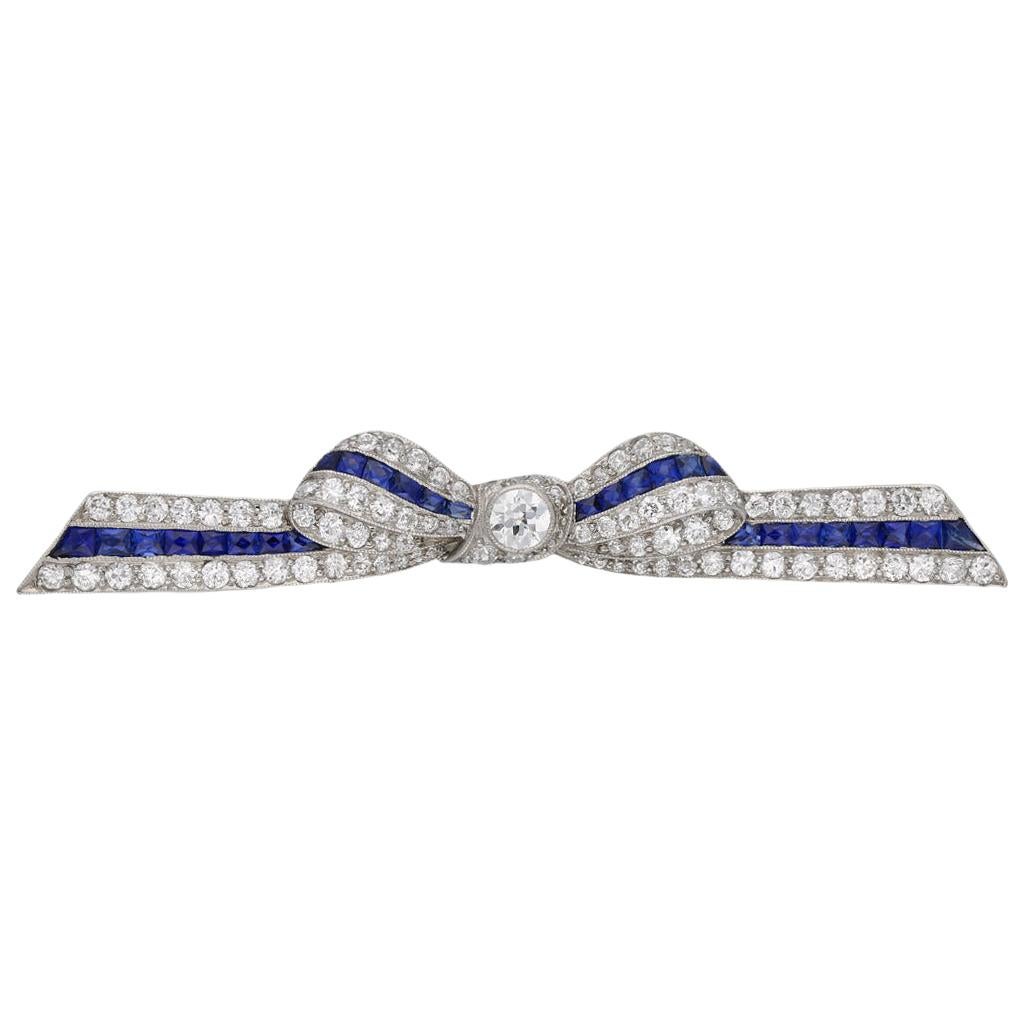Items Similar to FIVEOCLOCK Porcelain Brooch
Want more images or videos?
Request additional images or videos from the seller
1 of 7
FIVEOCLOCK Porcelain Brooch
About the Item
Porcelain Sterling Silver Handmade in London
Elevate your style with the FIVEOCLOCK Porcelain Ceramic Brooch. Made from the finest porcelain, this brooch features a charming British tea time scene with a glazed tea pot and cup accented with 24k gold and iridescent mother of pearl. Perfect for those with a sense of creativity and expression. Completed with a silver pin fastening. You will not find the same design anywhere. A must-have for art and fashion enthusiasts.
With their delicate charm and timeless elegance, porcelain brooches serve as the perfect way to elevate any outfit. Whether you adorn a scarf, jacket or hat, these pins effortlessly infuse sophistication and grace into your ensemble.
Each piece of FARPHORIA porcelain jewellery arrives in exquisite branded packaging, including a paper box and/or adorable cotton pouch, both stylish and functional for enduring use.
Created as one-of-a-kind
Fitted with sterling silver safety pin
Porcelain brooch dimensions: 30*40mm
Safety pin dimensions 4*30mm
- Creator:FARPHORIA
- Metal:Sterling Silver
- Weight:6 g
- Dimensions:Width: 1.19 in (30 mm)Depth: 0.4 in (10 mm)Length: 1.58 in (40 mm)
- Style:Artist
- Place of Origin:United Kingdom
- Period:2010-
- Date of Manufacture:2024
- Condition:
- Seller Location:London, GB
- Reference Number:1stDibs: LU3769222804922
About the Seller
5.0
Gold Seller
These expertly vetted sellers are highly rated and consistently exceed customer expectations.
Established in 2020
1stDibs seller since 2023
7 sales on 1stDibs
Typical response time: 4 hours
- ShippingRetrieving quote...Ships From: London, United Kingdom
- Return PolicyA return for this item may be initiated within 3 days of delivery.
More From This SellerView All
- Porcelain Ring TharBy FARPHORIALocated in London, GBPorcelain 24K gold Handmade in London Elevate your style with the THAR Porcelain Ring. Crafted from the most pristine porcelain, this ring boast...Category
2010s British Contemporary Fashion Rings
MaterialsGold, 24k Gold
- Porcelain Earrings TinaBy FARPHORIALocated in London, GBPorcelain 24K gold Gold filled chain Handmade in London Introducing TINA Porcelain Earrings, a truly exquisite piece made from pure porcelain and fully covered with 24K gold. Th...Category
2010s British Romantic Dangle Earrings
MaterialsGold-filled
- Porcelain Ring FabiolaBy FARPHORIALocated in London, GBPorcelain Mother of pearl Handmade in London Introducing the Fabiola Porcelain Ring, a perfect fusion of elegance and luxury that will elevate your jewelry collection to new heigh...Category
2010s British Artist Fashion Rings
- Porcelain Earrings PANTALABy FARPHORIALocated in London, GBPorcelain 14kt Gold Plated Sterling 24K Gold Handmade in London Ceramic Indulge in the exquisite beauty of PANTALA Porcelain Ceramic Earrings. Made...Category
2010s British Artist Dangle Earrings
MaterialsVermeil
- Porcelain Earrings AmataBy FARPHORIALocated in London, GBPorcelain 24K gold Mother of pearl Handmade in London Indulge in luxury with our AMATA Porcelain Ceramic Earrings. Made from the finest, whitest porcelain and adorned with delicat...Category
2010s British Romantic Lever-Back Earrings
MaterialsGold-filled
- Porcelain Earrings GhyllBy FARPHORIALocated in London, GBPorcelain 24K gold Mother of pearl Handmade in London Experience sophisticated luxury with GHYLL Porcelain Earrings. These exquisite earrings are made from the whitest porcelain a...Category
2010s British Artist Stud Earrings
MaterialsVermeil
You May Also Like
- Cartier New York GIA Certified 11.24 Carat Old Mine Cushion Diamond BroochBy CartierLocated in Miami, FLMagnificent Cartier Art Deco Platinum and Diamond Brooch featuring a matching pair of important Old Mine Cut Diamonds weighing 5.60 carats and 5.64 carats. Both accompanied by a GIA report stating that they are H color VS1 and H color VS2 clarity. This brooch comes with an Expertise letter from IAJA (international Antique Jewelers...Category
Vintage 1930s American Art Deco Brooches
MaterialsDiamond, Platinum
- Carved Coral Buddha Pendant in 18k Gold Set with Diamonds, Emeralds and RubiesLocated in Honolulu, HIMAGNIFICENT large vintage Buddha pendant brooch in 18K yellow gold. This gorgeous pendant features a stunning Buddha carved in natural coral set...Category
Late 20th Century Unknown Pendant Necklaces
MaterialsCoral, Diamond, Emerald, Ruby, 18k Gold
- Line Vautrin "La Manif" Gilt Bronze BroochBy Line VautrinLocated in New York, NYGilt brooch by Line Vautrin (1913-1997), circa 1945-46. The design is known as ...Category
Vintage 1950s French Artisan Brooches
MaterialsBronze, Gilt Metal, Gold Plate, Brass
- Vintage Ruby Onyx and Diamond Classic Car BroochLocated in London, GBHere we have a superb vintage brooch. The piece has been crafted from 18ct yellow gold into the shape of a classic car from the 1930s. Automobiles of the 1930s exhibited many notable...Category
Vintage 1930s Brooches
MaterialsDiamond, Onyx, Ruby, Gold, Yellow Gold, Enamel
- Marcus & Co. Sapphire and Diamond Bow Brooch, American, circa 1935Located in London, GBSapphire and diamond bow brooch by Marcus & Co, American, circa 1935. A yellow gold and platinum bow form brooch set with one central row of twenty eig...Category
Vintage 1930s American Art Deco Brooches
MaterialsDiamond, Sapphire, Platinum
- John Brogden Shell Cameo Brooch and Earrings, English, circa 1870By John BrogdenLocated in London, GBAntique shell cameo brooch and earrings by John Brogden, English, circa 1870. A yellow gold suite of jewellery, the brooch composed of a horizontally situated oval Bull’s Mouth shell cameo of the Greek goddess Selene riding a serpentine dragon in a rubover collet setting, encircled by a conforming frame of gold beading and twisted gold wire punctuated with four gold palmette form plaques engraved and decorated with dark blue enamel and placed at the cardinal points, the reverse mounted with a hinged pin and scroll clasp, the earrings each composed of a vertical oval Bull’s Mouth shell cameo engraved with a bust length portrait of Selene with crescent-set headdress, encircled by a conforming frame matching that of the brooch with the addition of a pendant decoration composed of a horizontal bar of gold beading and twisted gold wires suspending gold link chains graduated from centre and ending in conical gold elements, the reverses mounted with French wire fittings, all in a fitted red leather case, the interior marked ‘FIRST CLASS PARIS MEDAL/ 1855.1867.1851/ PARIS FIRST CLASS & LONDON PRIZE MEDALS/ JOHN BROGDON/ Goldsmith/ MANUFACTORY/ 16, Henrietta St. Covent Garden/ London’. The cameo—defined as a gem, usually either a mineral or a shell, upon which a design has been carved in relief—is believed to have originated in Hellenistic Greece, during the third century BC. These miniature sculptures, at that time confined to the medium of hardstone, are thought to have been made with the primary purpose of personal adornment. The same practice of mounting cameos in jewellery was then continued by the Ancient Romans, and they are known to have been worn by many a Roman emperor. After the fall of Rome the fashion for cameos went into a decline, until it was again revived during the Renaissance period, brought about by a keen interest in the ancient world. At this time both antique and contemporary cameos were mounted in jewellery, as well as collected as objet d’art. The art of cameo cutting was revived in Italy, where it would remain a centre for the coming centuries. Again there was a lull in interest in carved gemstones, until the Neoclassical revival of the eighteenth century, largely stimulated by the discoveries of the ancient Roman cities of Pompeii and Herculaneum. As with the Renaissance, antique specimens were generally prized over modern cameos, and the worldliest men in Europe held them among their collections of art and antiques. That said, carving centres in Rome and Torre del Greco (near Naples) in Italy were established in response to the demand of the Grand Tourists, who travelled to Italy and Greece to become educated in the wonders of the ancient world. It was at this time that shell cameos, mostly made in Torre del Greco due to its proximity to the sea, became more popular, owing to the relative ease in carving shell over hardstone. In addition to Rome, hardstone cameos also became a specialty of Idar Oberstein, Germany, which had a long history with both the gem mining and cutting trade. In a shift away from the collector’s cases of the previous century, the nineteenth century saw a strengthening in the fashion for wearable cameos. After the Empress Josephine donned a cameo-set suite of jewellery at the coronation of Napoleon in 1804, cameo jewellery became all the rage. Napoleon played a further hand in promoting the art by establishing a gemstone carving school in Paris, inspired by his appreciation for the arts of the ancient world. By the mid-nineteenth century shell cameos, in part due to their lightness compared with hardstone cameos, were the height of fashion. Large shell cameos as well as hardstone cameos were set into contemporary mounts, often as suites of jewellery. Some of the best cameos of the nineteenth century—carved by a select group of recognized carvers—were set into revivalist mounts, corresponding to the subject matter. In Victorian England cameo jewellery was particularly prized, due in part to the fact that the Queen owned and wore a number of cameo jewels. One example which can often be seen in official portraits is the Badge of the Order of Victoria and Albert, carved by Tommaso Saulini of Rome, who also produced cameos for the maker of the present suite, John Brogden. To meet demand some carvers set themselves up in London, including William Schmidt, a German carver from Idar Oberstein, who produced cameos for top London jewellers, including Brogden, Carlo Giuliano and Child & Child. In fact, Schmidt purports to have been the first to carve cameos out of opal, which Brogden reportedly displayed in the Paris Exhibition of 1878. An extant example, now in the collection of the British Museum, was set by the Giuliano firm. Regarding subject matter, cameos throughout time have been largely figural, from bust length profile portraits to scenes with multiple full-length figures, and sometimes animals. Ancient Greek and Roman cameos often depicted mythological scenes as well as contemporary figures. During the Renaissance, mythological scenes were popular, often taken directly from ancient sculpture, as well as portraits of notable contemporary figures. During the eighteenth and nineteenth centuries, due to the revivalist styles, both Renaissance and Classical subjects were copied and set into matching (and sometimes unmatching) revivalist mounts. From the Renaissance through the Victorian era, being able to recognize the source of the carving in a cameo was a mark of erudition, revealing in the wearer knowledge of Classical art. As mentioned, the present cameo parure...Category
Antique 1870s English Victorian Brooches
MaterialsYellow Gold





